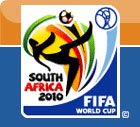With just over 100 days to go to the kickoff of the world's biggest media event, global eyeballs are likely to be trained onto the battlefield of brands before they switch to the football pitch. Having invested up to US$100m for the privilege of associating their brand with the FIFA World Cup, what returns can sponsors expect and what are the benchmarks for winning the world cup of branding in 2010?
The 2006 RoSI scorecard
Research conducted on the Return on Sponsoring Investment (RoSI) of the 2006 FIFA World Cup sponsors yielded an intriguing scoreboard.
In the turnover category, Adidas took the honours by far, scoring a 150% increase in sales of the official tournament ball (15 million sold during the tournament vs 6 million in 2002), and an astonishing 600% increase in national jerseys purchased (1.5 million vs 250 000 in 2002).
Adidas also came out tops in the MIP Brandometer, measuring the success of the seven sports brands represented on the shirts of the 32 competing teams.
The MIP Brandometer evaluates each brand's success by how well its teams were doing and measures brand exposure throughout the tournament. This is a significant measurement of RoSI in that even smaller suppliers such as Umbro, which provided kit to the English and Swedish teams, recorded significant gains in world-cup-related merchandising (Umbro boasted a 41% increase in sales).
The biggest winner
In terms of brand awareness, the biggest winner in 2006 turned out to be McDonald's, with a rise of 24% in event sponsor awareness (85% post world cup vs 61% pre), followed by Hyundai (50% post vs 28% pre) and Coca-Cola (86% post vs 68% pre).
Key to McDonald's success was setting its objective to transforming the brand image from junk to health food provider, and introducing a range of salads and fruit bowls. Secondly, by inviting 500 000 applications from children aged 6-10 for the football escorts from all over the world, it thereby demonstrated its genuine concern for the next generation.
The second biggest winner in 2006 turned out to be Hyundai. Starting off a very low brand sponsor awareness base of 28% pre world cup, Hyundai almost doubled its score to 50% by offering fans the opportunity to get actively involved in world cup activities, such as developing slogans for the team buses, the World Cup of Amateurs (with more than 40 000 fans battling their skills out on the pitch), and the Goodwill Ball Road Show (taking giant football on the road for fans to sign and wish their teams well).
The biggest loser
However, not all 2006 sponsors fared that well. Surprisingly, some even lost brand awareness scores on the hotly contested battlefield of events marketing.
The biggest loser turned out to be Fujifilm, which stopped short of major activations and experienced a drop in brand sponsor awareness of 13% (47% pre vs 34% post). Similarly, Philips and Gillette recorded brand awareness stagnation (36% pre vs 37% post, and 26% pre vs 28% post respectively).
Not surprisingly, all three pulled out of the FIFA World Cup Sponsoring Pool for 2010 (Gillette thus terminating its relationship after being involved in seven world cup tournaments).
The key differentiator in RoSI
On closer inspection, the key differentiator between the winning brands and the losers was the degree of causal branding, ie moving the emphasis from one's own products to supporting a social cause (such as youth empowerment) and converting consumers from passive spectators to active contributors.
Clearly, product hype is not enough anymore to maximise sponsorship RoI and event sponsors have to retrain their focus from the customary navel-gazing to genuine concern for consumers and the world at large.
A recent brand awareness survey conducted by CNBC Africa, on the occasion of hosting the first episode of the 2010 Legacy Debate Series, suggests that MTN are leading the sponsoring field far and wide. Almost all respondents named the telecommunications giant as a FIFA World Cup sponsor, whereas local counterparts FNB and Telkom hardly had any mentions.
MTN leading the 2010 scorecard
Says Cambridge Mokanyane, MTN Group GM: 2010 FIFA World Cup: “The reason behind taking up the baton of being the first African sponsor of the FIFA World Cup is to articulate the can-do spirit of Africa before the visiting countries, thereby justifying our brand management philosophy of selling Africa to the wider world.
“Our sponsorship is aimed at offering the African people the rare opportunity to exhibit their rich cultural potentials and heritage at the world stage. And, most importantly, to help create an environment that will be conducive to propelling an African team all the way to world cup glory - after all, this is what our customers are praying for across the continent, and the single-most instrumental catalyst for reversing media stereotypes about the continent.”
Concludes Cambridge: “Customers want to be entertained, stimulated, emotionally affected and creatively challenged. That is why we are sponsoring the global football competition.”
This correlates with a recent research study on the ‘fan motivation scores' of what football consumers really want - these being (in order of importance):
- positive level of arousal
- entertainment value
- diversion from everyday life, and
- group affiliation.
Will the 2010 sponsors reap as many returns as their 2006 counterparts did? And, most importantly, will causal branding win over marketing hype, and contribute to building a brand legacy for the country and continent, that will last well beyond the 31 days of football?




































